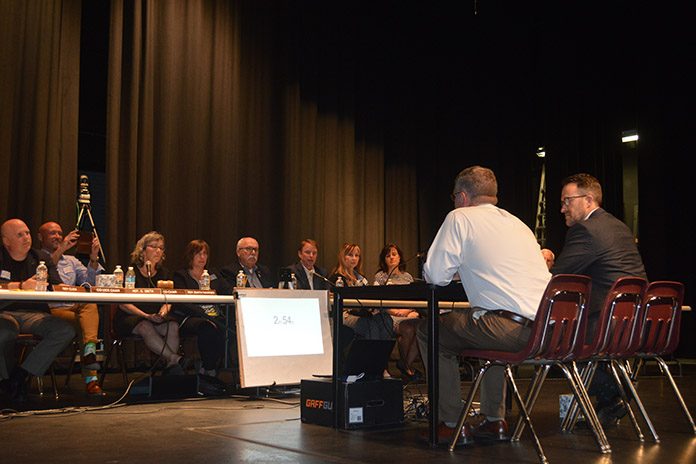
The Oregon Legislature’s Joint Committee on Student Success heard testimony on Wednesday from folks in and around the Hermiston area on what the state can do to help local communities better prepare students for the future.
Wednesday’s hearing at Hermiston High School was part of an effort by the committee to explore the best practices employed in Oregon’s most successful schools, and address the gaps that are limiting student success in other schools.
Access to programs that engage students is not always available to students throughout the state, according to several who testified on Wednesday.
Julie Mancini is the executive director of College Possible, a program that attempts to eliminate barriers that keep some students from attending college. She said the program is not available to all students, but state funding in the past three years has helped.
“I’m humbled by the work our students do despite the barriers they face,” she told the committee. “We’re in our third year of funding and that has helped us extend the program to rural Oregon, but there’s more who could benefit.”
Umatilla School Superintendent Heidi Sipe told the committee that “geography matters a lot” in education. She said it’s not fair that a student benefits from a program simply because of where they live.
“Anytime you hear of a great program that’s somewhere else, our kids need it, too,” she said. “Not just our metro students.”
Hermiston City Manager Byron Smith and Hermiston Mayor Dave Drotzmann testified about the limits tax compression have put on local communities.
Smith said 100 percent of Oregon counties and most of the state’s cities and school districts are under compression, which puts limits on how much tax revenue jurisdictions can collect, thanks to a pair of measures passed by Oregon voters in the 1990s.
Smith said Hermiston alone loses out on more than $230,000 a year due to compression. He asked the committee to come up with a solution to allow local governments to use tax revenue to solve their own problems.
Droztmann suggested going back to real market value rather than assessed value which could mean an additional $200 billion of assessed property value that could be taxable. He also recommends amending the cap up by a dollar, which he said would generate an additional $800 million in the next biennium for schools.
“Our property tax system is failing our schools and cities by taking all local control away,” he said. The mayor said it’s critical to invest in our schools because they are the “number 1 recruitment tool for businesses and families.”









